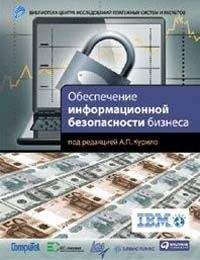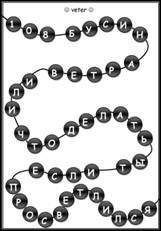Коллектив авторов - Африка. История и историки
Таким образом, в целом можно отметить следующее. Общая для африканской историографии первых десятилетий независимости тенденция к внимательному изучению собственного доколониального прошлого на основе первоисточников в студенческих работах представлена достаточно широко. Причем в ряде случаев работы сделаны на основе археологического материала и касаются совсем давних времен.
Наоборот, другая тенденция – пристальное внимание к антиколониальным движениям – здесь представлена весьма слабо, причем, как и в прежние годы, главным образом исследуется так называемое первоначальное сопротивление, а не антиколониальные революции. Куда большую долю в работах о колониальном периоде составляет тематика, связанная с колониальной администрацией, развитием сельского хозяйства и проч.
Совсем невелика доля работ по истории независимого периода – видимо, такие работы шли по разделу «политология», в исследуемом источнике не представленному, или же для таких работ прошло еще слишком мало времени.
«Сквозные» работы носят скорей этнографический характер – речь в большинстве случаев идет об истории отдельных народов, отдельных ремесел и т. п. Часты также работы по истории отдельных поселений – сельских и городских. Значительно более разнообразны и занимают большое место подобные работы лишь в двух странах – Сенегале и Кот д'Ивуаре.
Понятно, что работ о других странах, тем более дальних, совсем мало. Это связано в первую очередь с необходимостью основываться на первоисточниках. И в этом смысле работы, написанные о своих странах обладают одним общим крайне ценным свойством – они вводят в научный оборот множество новых источников, ведь написаны они по-французски (одна даже по-английски) и, следовательно, доступны зарубежным историкам.
Можно предположить, что в 1990–2000-е годы тематика студенческих работ могла измениться, что связано, в частности, с таким мощным фактором, как Интернет, находящий все более широкое распространение и в Африке. Думается все же, что изменения не такие большие, как обнаруженные мной у выпускников ИСАА по специальности «История Африки»[722]: уж слишком заманчиво для студентов-африканцев сделать работу на собственных источниках, связанных с собственным народом.
Конечно, далеко не все восемь с лишним сотен выпускников, работы которых представлены в источнике, стали профессиональными историками. Однако кое-кто из них с годами стал считаться крупным исследователем. Так, на сайте Сенегальского университета, носящего с 1987 г. имя Шейха Анта Диопа, среди ведущих преподавателей числятся историки Ибрагима́ Тиуб и Умар Кане. Первый из них защитил в этом университете в 1982 г. магистерскую диссертацию о Демократическом Объединении Африки (ДОА) и его роли в антиколониальной борьбе в 1946–1958 г.[723] Второй же, имя которого упоминается с особым пиететом, защитил диссертацию по истории Фута-Торо в XVI – начале XIX в.[724]
Благодаря публикациям французских коллег можно увидеть дальнейшее развитие научных интересов некоторых из выпускников африканских университетов. Например, в книге «Африканские историки в Африке. История вчерашняя и сегодняшняя: логика прошлого и современные тенденции»[725], представляющей собой материал международной конференции 1996 г., находим знакомые имена.
Так, исследовательница из Нигера Буремиа Альфа Гадо, защитившая диплом о голоде в Сахеле в 1880–1973 гг., сделала доклад, посвященный роли местной администрации в модернизации сельского хозяйства в одной отдельно взятой части Нигера уже в 90-е годы ХХ в.[726]
Сенегальский ученый Ибрагима́ Тиуб, защитивший в 1982 г. диссертацию о ДОА в 1940–1950-х годах, наоборот, обратился к более раннему периоду колониальной истории. Его доклад назывался «Колониальное завоевание и сопротивление родовых обществ в Южных реках»[727].
Другой сенегальский исследователь, Мамаду Фалл, защитивший в 1981 г. магистерскую диссертацию о движении капитала между Францией и ФЗА в 1900–1946 гг., посвятил свой доклад на этой конференции ряду проблем сенегальской торговли в XVIII–XIX вв.[728]
Эти примеры свидетельствуют, что африканские историки в определенной степени продолжают исследовательскую тематику, заявленную в выпускных квалификационных работах. При этом может меняться период исследования и усложняться затрагиваемые ими проблемы.
Chris Saunders. One hundred years of the African national Congress: New Insights?
Centenaries are ofen the occasion for publishers to launch new books, and the centenary of the African National Congress (ANC) of South Africa, the oldest liberation movement on the African continent, in 2012 has proved no exception. What has appeared in the centenary year on the history of the ANC has been of varying quality. Te year began with the launch of a very expensive cofee-table book by the ANC’s own Progressive Business Forum on the twelve leaders of the ANC over the hundred years; this contained some fne photographs, but no new information on the leaders themselves or the context in which they operated[729]. Towards the end of the centenary year, however, a furry of more important new publications saw the light of day, publications that help open new windows onto the history of the ANC, while they also help raise to the surface ongoing debates about that history.
Some of these new publications concern the founding and early years of the ANC, which I take to be its frst three decades, from the establishment of the South African Native National Congress (SANNC), in 1912, through the change of name to ANC in 1923 to its decline in the 1930 and the advent of Alfred Xuma as the new President-General in 1940. Te two middle decades in the organisation’s history include inter alia the African Claims document of 1943 and the founding of the Youth League the following year, the revival in the ANC’s fortunes, its becoming a mass movement for the frst time in the early 1950s, and its activities in that «decade of defance». Te middle decades end with the banning of the organisation in 1960, its movement underground and the decision, taken within the underground ANC in 1961, to turn to armed struggle. Te three decades of exile, from 1960 to 1990, constitute a distinct third period in the ANC’s hundred years. A fourth period may be said to run from 1990 to the present, during which the ANC re-established itself within South Africa as a political party, then in 1994 became the governing party, initially in a Government of National Unity, when South Africa became a democracy. Tis period also encompasses the almost twenty years that have elapsed since then.
Let us now consider some of the new work on each of these four periods in turn.
1. Founding and early History to 1940
Undoubtedly the most important work to have appeared in the centenary year on the establishment of the ANC takes the story to, but not beyond, the meeting in Waaihoek, Bloemfontein, in January 1912 at which SANNC was founded. Andre Odendaal’s «Te Founders», subtitled «Te Origins of the ANC and the Struggle for Democracy in South Africa», contains almost 500 pages of text, followed by 56 pages of notes in very small font, and this refects the extent of the research that underpins the volume[730]. Te book draws upon Odendaal’s most impressive master’s dissertation, published as «Vukani Bantu: the Beginnings of Black Protest Politics to 1910» as long ago as 1984, the doctoral dissertation that he completed at the University of Cambridge in 1983 on «African Political Mobilisation in the Eastern Cape, 1880–1912» and new research, especially on African organisations outside the Cape. Te result is a masterly synthesis, which inter alia explores the impact of the South African war on black African organisation in the four states of what became South Africa, then how the process leading to the creation of the Union of South Africa in 1910 galvanised black Africans into united action. «Te Founders» ofers a mass of new information on many members of the new educated African elite and their activities in the late nineteenth century and frst decade of the twentieth. Odendaal calls his work «an organisational or “family” history, which seeks to construct a group biography of the frst generations of activists and political bodies in South Africa» (P. XIII–XIV). As he says, he only addresses historiographical debates on his period implicitly, his main concern being «to restore the African voice and identity» (P. XIV). The key that unlocked the door to this was his reading of the early newspapers published for black readers, newspapers that contained content both in English and in indigenous languages.
Writing in 1984, Odendaal wondered whether the ANC, when it reached its centenary in 2012, would be «guerrilla or government» (P. XV). Now that we know the answer, he ends his Introduction to his new book by expressing the hope that the past he has recovered «will inspire those both inside and outside the ANC… to proceed into the future more enlightened and more emboldened in the pursuit of human dignity and democracy» (P. XV). He clearly writes as an admirer of the ANC, who has not allowed disillusionment with it in the present to afect his retelling of what he sees as an inspiring story of people struggling for equal rights. One can of course quibble with the way he has presented some of his material – the struggle against segregation in the early twentieth century was hardly one for democracy in the sense that we know today, for example, which makes his sub-title less than accurate – but this is a major scholarly work, which will retain its importance long into the future.
The same cannot be said for another book that became available in 2012, though published in 2011, the frst full-scale biography of Pixley ka Isaka Seme, the driving force behind the establishment of the South African Native National Congress in January 1912[731]. Moss Mashamaite’s «Te Second Coming» is an ofen poorly written and self-indulgent amalgam of scattered information about Seme, about whom the author writes in hyperbole, at one point calling him «Arguably the most important historical South African fgure» (P. 37). Tough Mashamaite has found some interesting new information about Seme’s role in the establishment of the Native Farmers Association of Africa (Chapter 6 and especially P. 165f), his book is far from being the seminal biography that Seme deserves, one on the lines of, say, to Brian Willan’s monumental biography of Seme’s colleague Sol. T. Plaatje, the frst Secreatry General of the South African Native National Congress or Heather Hughes’s powerfully-written life of John Dube, the frst President-General of the organisation[732]. «Te Second Coming» is especially weak on Seme’s later years, including his disastrous presidency of the ANC from 1930 (Chapter 14), where Mashamaite makes no use of Marvin Faison’s thesis, which remains the most detailed study on that period of Seme’s life[733].
Seme’s role in relation to the various newspapers he established is sketched briefy in one of the chapters (P. 8) of Mashamaite’s book[734]. How much more can be learned of the most important paper Seme founded, «Abantu-Batho», can now be seen from «The People’s Paper: A Centenary History and Anthology of Abantu-Batho» edited by Peter Limb[735]. When he founded the newspaper in 1912, Seme expected it to become SANNC’s national newspaper, which it was only for a relatively short period, and it limped along before it folded in 1931, yet it is a key source of information about black politics in the ANC’s frst two decades. Ye t while leading African politicians, public intellectuals and journalists of the day, and such people as the poets S.E.K Mqhayi and Nontsizi Elizabeth Mgqwetho and editor Robert Grendon, contributed to «Abantu-Batho», the shocking fact is that no run of the paper has survived anywhere for scholars to use. What Limb has now done is to bring together a dozen essays on aspects of the paper’s history, and to append to them a 160 page anthology of columns – articles, editorials and letters – from «Abantu-Batho» for every year between 1912 and 1931, fragments of issues of the newspaper found in scattered places on three continents. Tis exercise in recreating a long-lost newspaper involved massive research, for which Limb was able to draw upon the knowledge he accumulated while working on his monograph, published in 2010, on the early years of the ANC, which focused especially on the relationship between the early ANC and black labour and which began to explore the history of the ANC in this period on a local and provincial basis[736]. His chapters in this new book provide much new information about the organisation, especially in relation to its day-to-day activities on the Witwatersrand. One of the chapters in this book, by Robert Vinson, explores relations between the ANC and the Garvey movement in the 1920s, a topic examined in greater depth in another 2012 publication, Vinson’s long-awaited monograph on Garveyism in South Africa[737]. «Abantu-Batho» undoubtedly played an important role in challenging the injustices of South Africa in the years afer 1912 and its partial recreation now is a major achievement, even if much about the paper remains uncertain, including the role played by Queen Labotsibeni of Swaziland, in establishing it, the subject of another chapter in this centennial volume.




